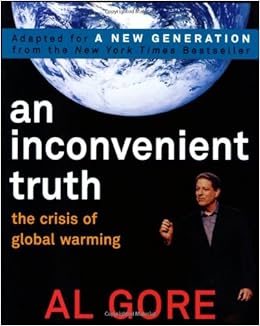
How do we educate on the lesson of climate change that is relevant for youth? How do we understand the root causes of these changes, and how do we plan for a resilient future?
These are difficult questions that are often hard to teach in a way that hits home for kids. This in-depth text by Al Gore accompanies the movie of the same name to give a wider perspective on the evidence and issues of global warming, with a simple and straightforward approach. With easy to understand graphics about issues like glacial melting, rising atmospheric temperatures and rising sea levels, the text provides a clear understanding on the impacts to human and more-than-human communities, though it may be more appropriate for older students who can grasp the weightier issues and policy implications on a global scale.
One of the most important components of the arguments for swift movement are the greenhouse gas emissions of U.S. homes, cars and consumption patterns- a fact which families have control of as consumers. Furthermore, understanding some of the policy implications for climate change is an important civics lesson for youth. To truly improve our commitment, our schools, transportation and housing must become more efficient and our sources of energy more sustainable. These are all ripe areas for students to directly impact – such as the Detroit Youth Energy Squad home efficiency sweeps – or for students to become advocates for in their local municipality. Luckily, we have regional resources, like Clean Energy Coalition, Michigan Energy Options and Next Energy that have great resources on both energy efficient and renewable energy options in the state. For up to date information on regional, national and international efforts to reduce our energy impacts, read on for more information:
- Consumers Settles EPA Lawsuit Over Coal Plant Emissions
- UN Climate Summit 2014
- U.S. Climate Action Plan 2014
- How Cap and Trade Systems Work
Comment on how you have tried to weave climate science and action projects into your curriculum. How did your students respond to and address these important issues?
